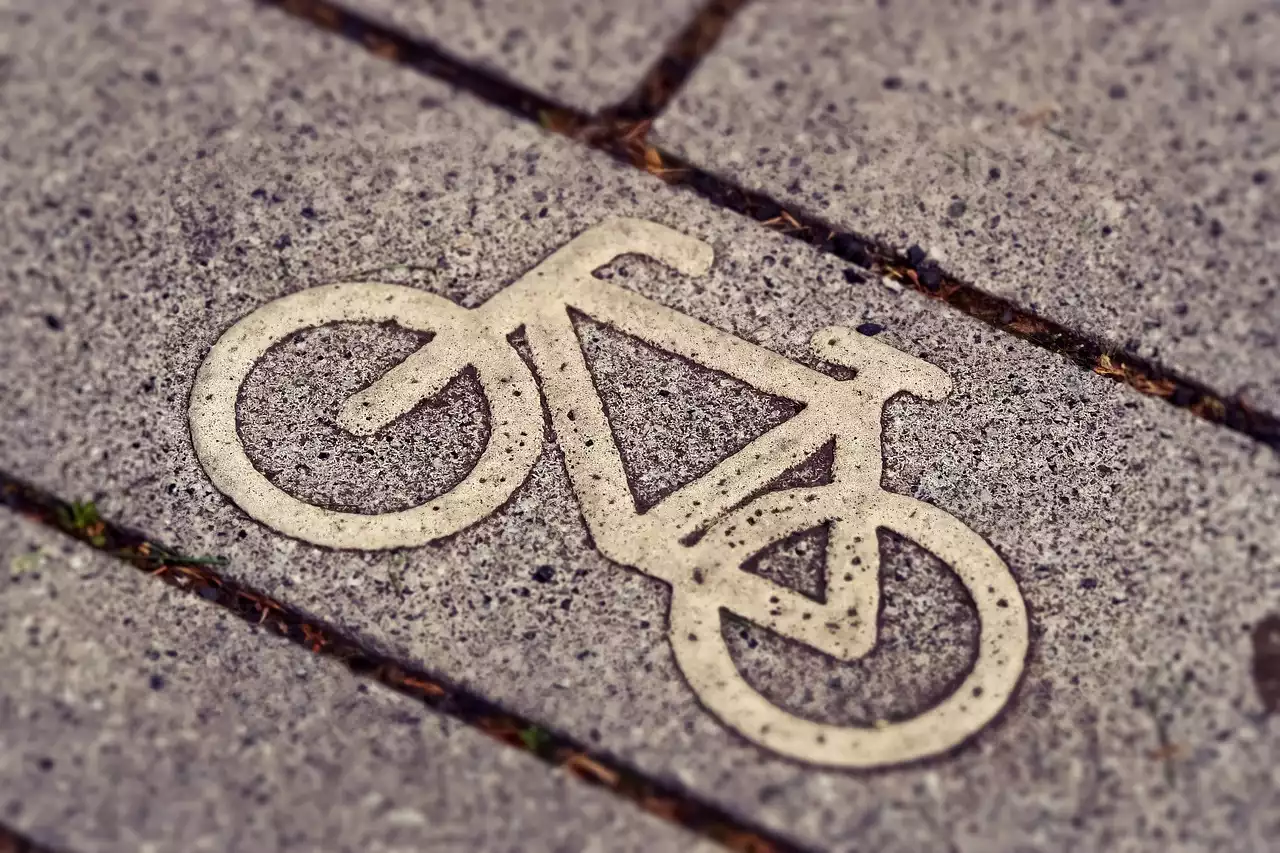The Importance of Proper Bike Sizing and Fitting
Bike sizing and fitting are important for a number of reasons. First and foremost, an ill-fitting bike can be uncomfortable and even dangerous to ride. If your bike is too big or too small, you may experience pain or discomfort in your back, neck, shoulders, or knees. Additionally, an improper fit can affect your body's balance and alignment, which can lead to poor posture and even injuries.
Another reason why proper bike sizing and fitting are important is performance. A bike that fits you well will allow you to ride more efficiently and powerfully. You'll be able to pedal with more ease and generate more speed and power, which will make your rides more enjoyable and rewarding.
Finally, proper bike sizing and fitting can also impact your overall health and wellbeing. Riding a bike is a great way to stay active and improve your cardiovascular fitness, but if your bike is not properly fitted, you may not be getting the full benefits of your workout. A bike that fits you well will allow you to ride longer and more comfortably, which can help you achieve your fitness goals.
Understanding Bike Geometry
Before we dive into the specifics of bike sizing and fitting, it's important to understand the concept of bike geometry. Bike geometry refers to the angles and dimensions of a bike's frame and components. Different types of bikes have different geometry, which can affect their ride characteristics and fitting requirements.
For example, road bikes have a more aggressive geometry with a lower handlebar position and longer top tube, which allows for a more aerodynamic riding position. On the other hand, mountain bikes have a more relaxed geometry with a higher handlebar position and shorter top tube, which allows for a more upright riding position and better control on rough terrain.
Understanding bike geometry can help you choose the right type of bike for your needs and preferences, as well as ensure that it fits you properly.
Types of Bikes and Their Fitting Requirements
As we mentioned earlier, different types of bikes have different geometry and fitting requirements. Here are some of the most common types of bikes and their unique fitting considerations:
Road Bikes
Road bikes are designed for speed and efficiency on smooth roads. They have a more aggressive geometry with a lower handlebar position and longer top tube, which allows for a more aerodynamic riding position. When fitting a road bike, it's important to pay attention to the saddle height, saddle setback, and handlebar position, as these can all affect your comfort and performance on the bike.
Mountain Bikes
Mountain bikes are designed for off-road riding on rough terrain. They have a more relaxed geometry with a higher handlebar position and shorter top tube, which allows for a more upright riding position and better control on bumpy trails. When fitting a mountain bike, it's important to pay attention to the saddle height, handlebar position, and suspension settings, as these can all affect your comfort and control on the bike.
Hybrid Bikes
Hybrid bikes are a combination of road and mountain bikes, designed for a variety of riding conditions. They have a more relaxed geometry than road bikes but are more efficient than mountain bikes. When fitting a hybrid bike, it's important to pay attention to the saddle height, handlebar position, and tire pressure, as these can all affect your comfort and performance on the bike.
City Bikes
City bikes are designed for commuting and urban riding. They have a more upright geometry with a comfortable saddle and swept-back handlebars. When fitting a city bike, it's important to pay attention to the saddle height and handlebar position, as these can affect your comfort and posture on the bike.
Electric Bikes
Electric bikes are becoming increasingly popular for their ability to assist riders with pedaling. They come in a variety of styles, including road, mountain, and city bikes. When fitting an electric bike, it's important to pay attention to the saddle height, handlebar position, and pedal assist settings, as these can affect your comfort and performance on the bike.
How to Measure Yourself for a Bike
Now that you have a better understanding of bike geometry and fitting requirements, let's talk about how to measure yourself for a bike. Here are the basic steps to follow:
Step 1: Measure Your Inseam
Your inseam is the distance from your crotch to the floor. To measure your inseam, stand barefoot against a wall with your feet shoulder-width apart. Place a book or other flat object between your legs, and raise it until it is snug against your crotch. Measure the distance from the top of the book to the floor.
Step 2: Determine Your Frame Size
Your frame size is based on your inseam measurement. Most bike manufacturers provide sizing charts that correlate inseam length with frame size. Use these charts as a starting point, but keep in mind that frame size can vary depending on the type of bike and your individual body proportions.
Step 3: Adjust Your Saddle Height
Once you have your bike and frame size, the next step is to adjust your saddle height. Your saddle height should be adjusted so that your leg is almost fully extended when the pedal is at the bottom of its rotation. This will ensure maximum power and efficiency when you pedal.
Step 4: Adjust Your Handlebar Position
The final step in bike fitting is adjusting your handlebar position. This will depend on your riding style and the type of bike you have. For example, if you have a road bike, you may want a lower handlebar position for a more aerodynamic riding position. If you have a mountain bike, you may want a higher handlebar position for better control on rough terrain.
Bike Sizing Charts and Guides
As we mentioned earlier, most bike manufacturers provide sizing charts that correlate inseam length with frame size. These charts can be a helpful starting point when choosing a bike, but keep in mind that they are not foolproof. Frame size can vary depending on the type of bike and your individual body proportions.
If you're unsure about which size to choose, many bike shops offer test rides and fittings to help you find the right bike and size for your needs.
Evaluating Bike Fit - Common Issues and How to Fix Them
Even with careful measurements and adjustments, it's possible to experience discomfort or pain while riding your bike. Here are some common issues and how to fix them:
Issue: Pain in the Neck, Shoulders, or Back
If you're experiencing pain in your neck, shoulders, or back, it may be a sign that your handlebar position is too low. Try raising your handlebars or adjusting the stem to a shorter length.
Issue: Knee Pain
If you're experiencing pain in your knees, it may be a sign that your saddle height is too high or too low. Try adjusting your saddle height so that your leg is almost fully extended when the pedal is at the bottom of its rotation.
Issue: Numbness in the Hands or Feet
If you're experiencing numbness in your hands or feet, it may be a sign that your saddle position is too far forward or too far back. Try adjusting your saddle position so that your weight is evenly distributed between your hands, feet, and saddle.
The Role of Saddle Position and Handlebar Height in Bike Fit
We've already touched on the importance of saddle position and handlebar height in bike fit, but let's dive a bit deeper into why these factors are so crucial.
Saddle Position
Your saddle position affects your comfort and efficiency on the bike. If your saddle is too far forward, you may experience discomfort in your hands, feet, or knees. If it's too far back, you may experience pain in your lower back or shoulders. The goal is to find a position that allows you to pedal with maximum power and efficiency without causing discomfort or pain.
Handlebar Height
Your handlebar height affects your riding position and control on the bike. If your handlebars are too low, you may experience discomfort in your neck, shoulders, or back, as well as reduced control on the bike. If they're too high, you may sacrifice efficiency and speed. The goal is to find a position that allows you to ride comfortably and confidently while maintaining control on the bike.
Adjusting Bike Components for a Better Fit - Pedals, Stem, and Handlebars
In addition to adjusting your saddle position and handlebar height, there are other bike components that can be adjusted for a better fit. These include your pedals, stem, and handlebars.
Pedals
Pedals can be adjusted or replaced to provide a better fit for your feet. For example, if you have wide feet, you may want to choose pedals with a wider platform. If you have foot pain or discomfort, you may want to consider pedals with more cushioning.
Stem
The stem connects the handlebars to the fork of the bike and can be adjusted for a better fit. If you're experiencing discomfort in your neck or shoulders, you may want to try a shorter stem. If you're experiencing discomfort in your lower back or hips, you may want to try a longer stem.
Handlebars
Handlebars come in a variety of shapes and sizes and can be adjusted to provide a better fit for your hands and riding style. For example, if you have small hands, you may want to choose handlebars with a smaller diameter. If you prefer a more upright riding position, you may want to choose handlebars with a more swept-back shape.
The Benefits of a Professional Bike Fitting
While it's possible to fit your bike on your own using the steps and tips we've outlined in this guide, a professional bike fitting can provide even greater benefits. A professional bike fitter can take into account your individual body proportions, riding style, and goals to create a personalized fitting plan that maximizes your comfort, efficiency, and performance on the bike.
A professional bike fitting may include a variety of tests and measurements, such as a flexibility assessment, foot alignment analysis, and saddle pressure mapping. The fitter may also recommend changes to your bike components, such as a different saddle or handlebars.
Overall, a professional bike fitting can be a worthwhile investment for anyone who wants to take their riding to the next level.










.png?size=50)